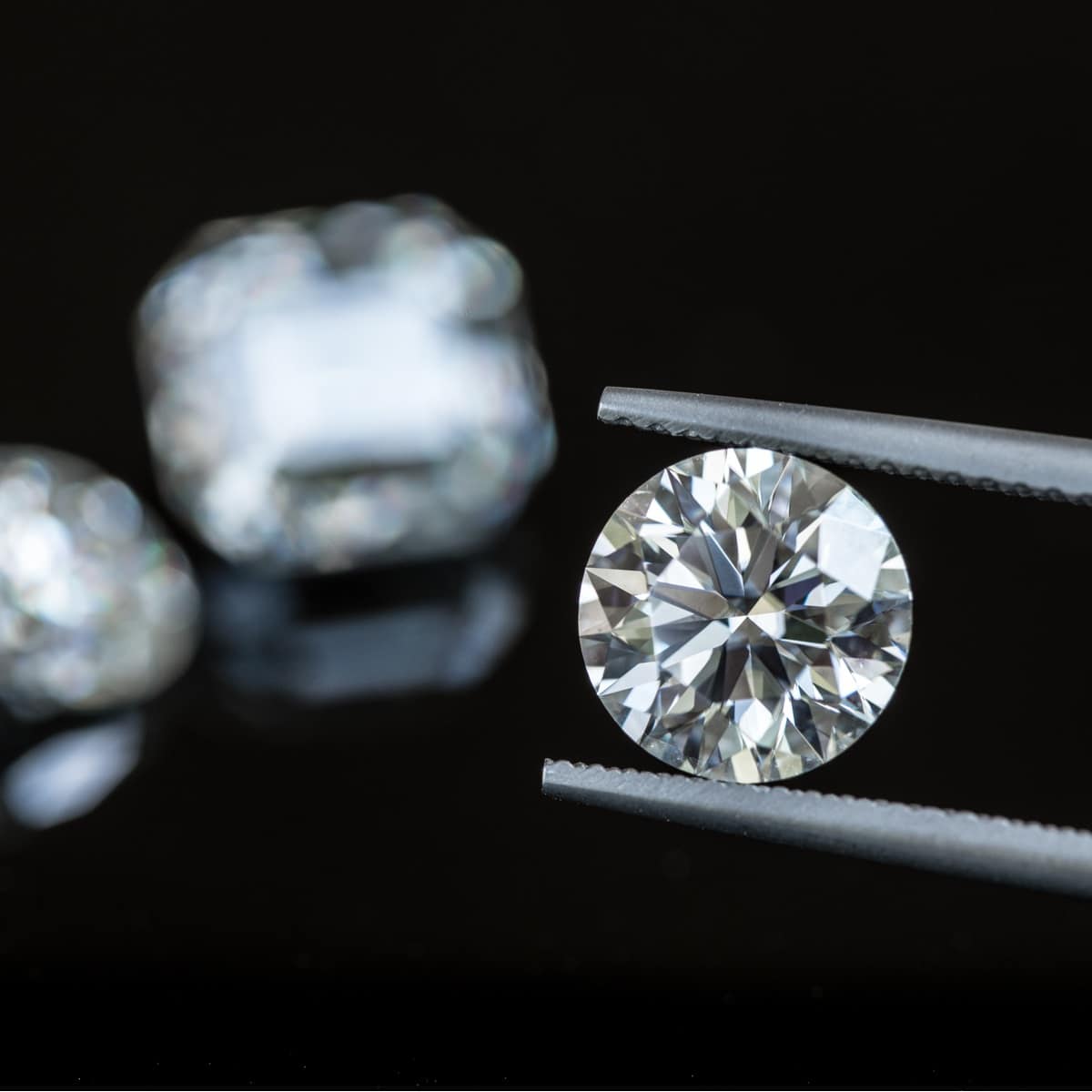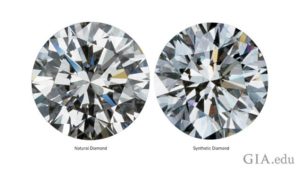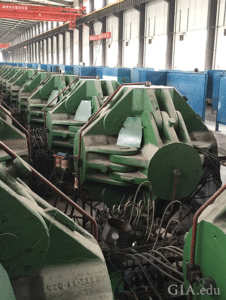
Let me be frank. Many years ago, when I first started hearing about laboratory-grown diamonds in the jewelry marketplace, I was skeptical. Diamonds grown in a factory? Nah, never. However, with the recent developments laboratory-grown diamonds and their rising acceptance in the industry, I have made my decision that a lab-grown diamond can be a good alternative to a natural diamond. I’m not talking about cubic zirconia or synthetic Moissanite. These synthetic diamonds look, feel, and react to light almost identically to a natural diamond.

A natural faceted diamond, on the left, and a man-made faceted diamond on the right. Photo by GIA
The first man-made diamond was actually created in the 1950’s for industrial use. In 1970, researchers at General Electric produced the first, small, gem-quality synthetic diamonds that could be faceted as gems, but the process was too costly for the small amount of diamond production. It was not until the mid-2010’s that colorless laboratory-grown diamonds entered the gem and jewelry market in commercial quantities.
Now, we are seeing more and more diamond factories popping up, and the production of larger than one-carat stones are on the rise. My last visit to the Las Vegas Gem and Jewelry Show had several lab-grown diamond dealers exhibiting.

HPHT (High-Pressure and High-Temperature) presses enclosed in a factory which can produce gem-quality diamonds within a large range of sizes. Photo: Wuyi Wang/GIA
The two processes for creating lab-grown diamonds are High-Pressure, High-Temperature (HPHT), and Chemical Vapor Deposition (CVD). HPHT mimics the natural conditions that form natural diamonds in the earth. CVD involves breaking down and changing molecules which are then deposited on diamond seeds to produce a crystal. Basically, the forces of nature are replicated to “grow” diamonds just as they are created under the earth’s crust. Both of these processes can produce a diamond in about one month. Lab-grown diamonds occur in various color grades and clarity grades, just like natural diamonds, but it is only of recent that 1-carat plus stones are more readily available. We can even find you a matched pair for earrings.
Because laboratory-grown diamonds are essentially chemically and optically the same as their natural counterparts, traditional gemological observations and old-style “diamond detectors” are not able to tell them apart. Identification at a professional gemological laboratory or using sophisticated devices developed by GIA and other organizations are the only reliable methods to separate them from natural diamonds. In other words, your jewelry purchases should always be from an educated, trusted source.
Whether it be for environmental reasons or it just appeals to your inner “techy,” a lab-grown diamond may be the direction to travel when making that all-important diamond purchase. Moreover, the reality of the good financial savings of Lab-Grown is a definite plus, as most cost about 25%-40% less than natural diamonds, depending on size and quality.
As a private jeweler, I have partnered with the finest lab-grown dealers in existence and would be honored to present diamonds to you. I strongly recommend viewing diamonds side-by-side, earth-grown vs. lab-grown so you can make an informed selection. You really cannot detect the difference. The simple fact of the matter is that lab-grown, like earth-grown, are both crystallized carbon. One is a billion or more years old, and the other is grown in a human-controlled environment. With my gemological expertise and years of experience, I will help you make an informed decision that feels right for you. Our lab-grown and natural diamonds are accompanied by GIA laboratory certificates.
Of course, I still offer, and always will, beautiful earth-grown diamonds responsibly sourced from reliable, conflict-free suppliers. 100% nature made. To some, this will remain the desired choice in diamonds. Mother Nature at her best.
So, the joy of making a personal selection of a gem that “speaks” to you is still in place. I would love to help you with your choice.
 Kim Smith
Kim Smith
Graduate Gemologist, Gemological Institute of America
National Association of Jewelry Appraisers
Book your diamond appointment today!
Click here to read more about Natural and Lab-Grown Diamonds
Very informative, thanks Kim!